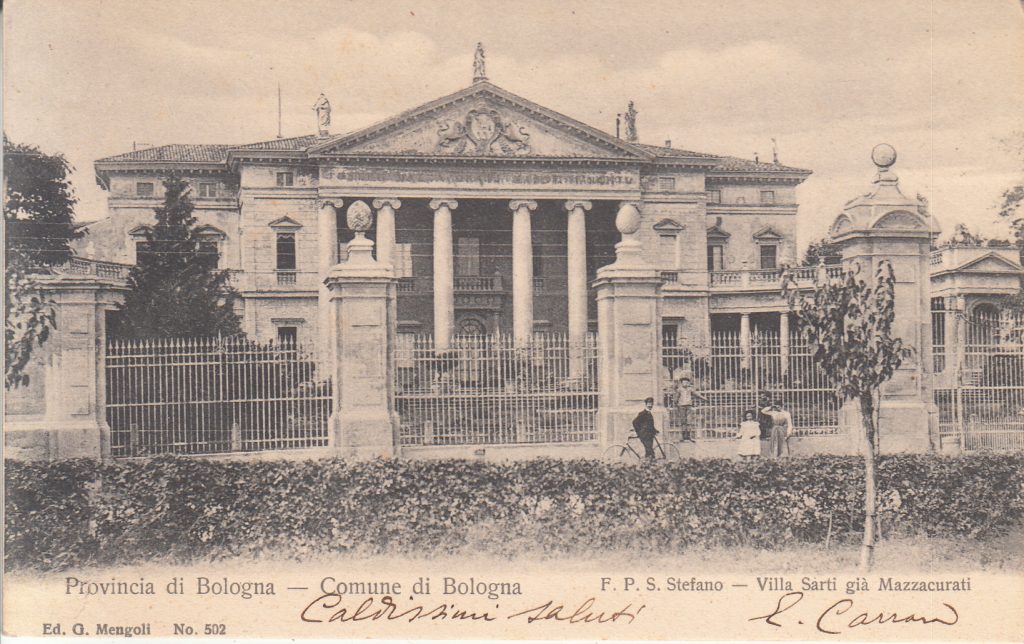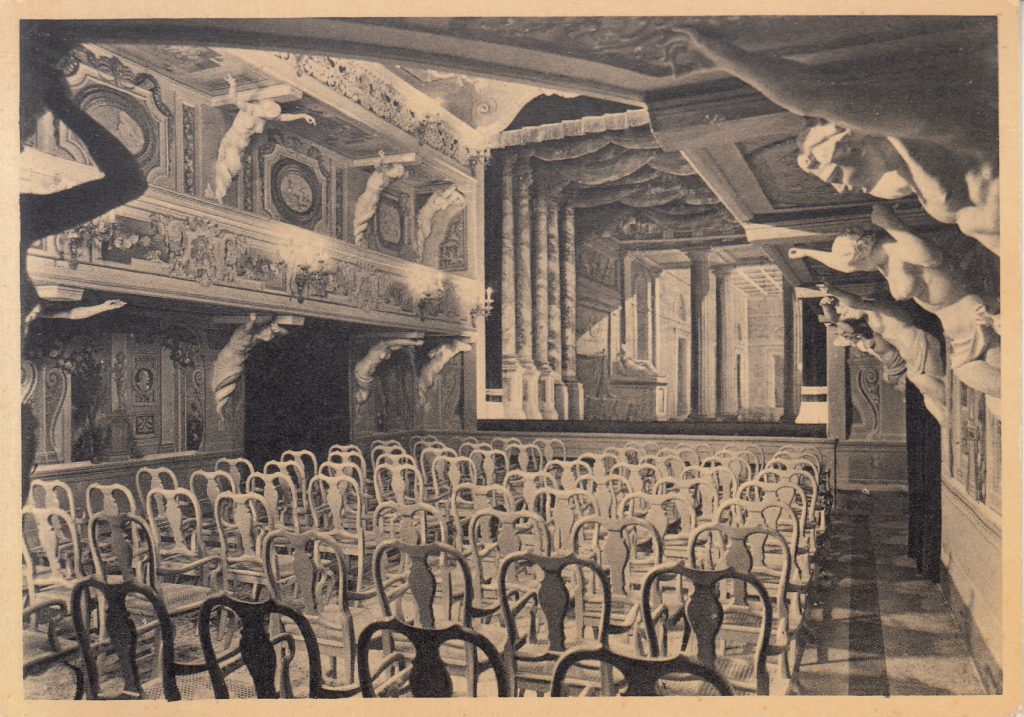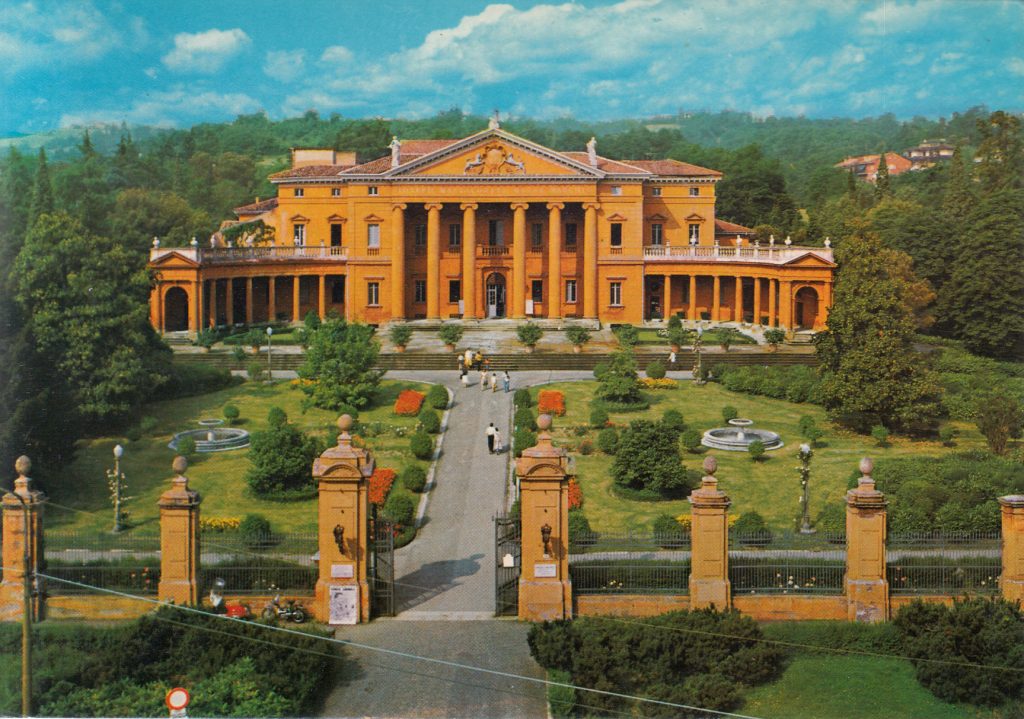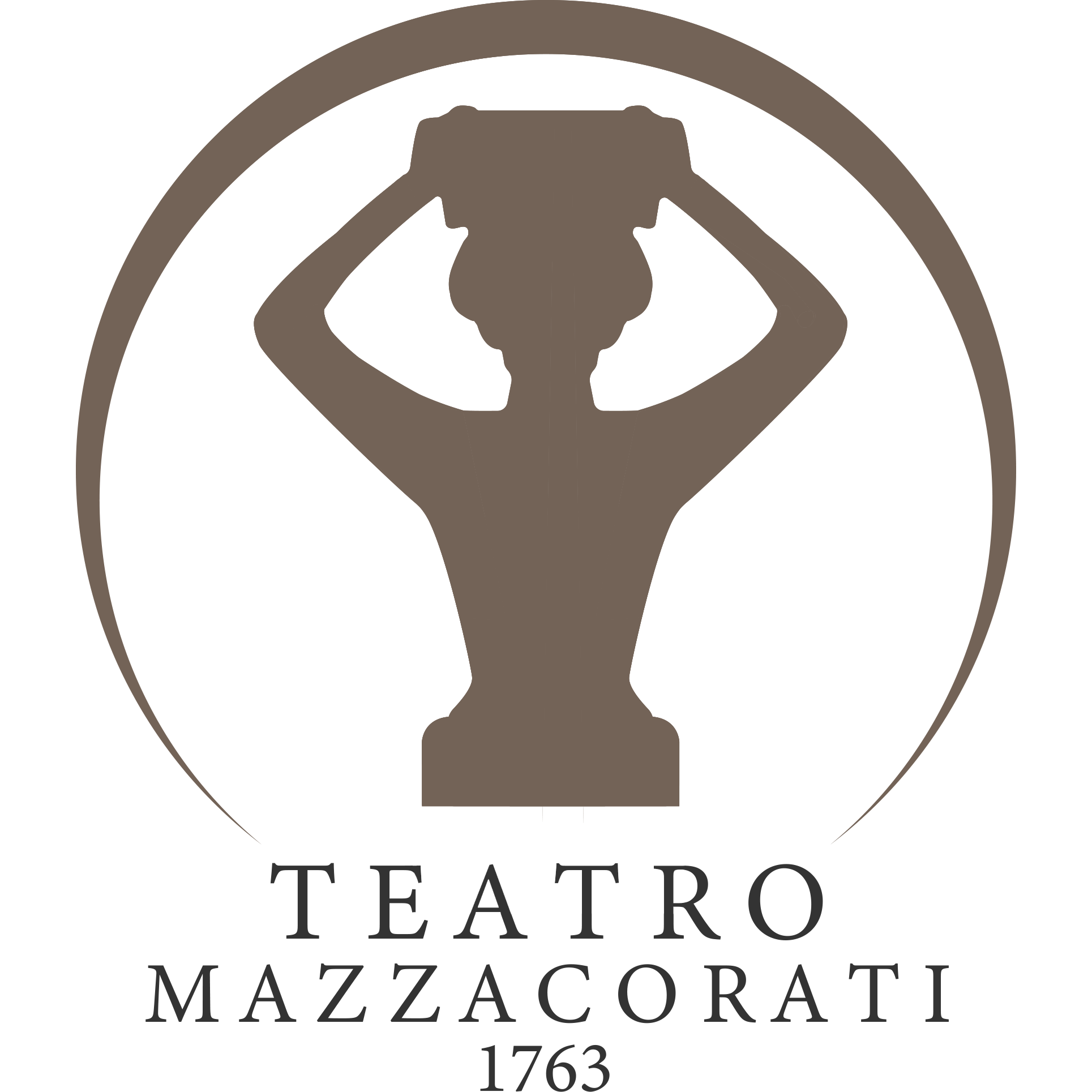The history of Villa Aldrovandi-Mazzacorati, located in Bologna’s Savena district in Via Toscana, begins in the 17th century when it belonged to the Marescotti family. Shortly after being orphaned by his father Raniero, Gianfrancesco Aldrovandi decided to install a small theater in the “Palazzo a Camaldoli”, which was the name for the Villa that, at that time, was located in the Bolognese countryside on the road to Tuscany.

The Fausto Malpensa Collection
Count Gianfrancesco Aldrovandi, a very cultured man, inherited the Villa by birthright and oversaw the renovation of the building that led to the construction of the theater in the left wing of the Villa. The theater was inaugurated on 24 September 1763 with Voltaire’s “Alzira” tragedy, translated by Vincenzo Fontanelli (a writer from Modena and father of Lucrezia, who married Gianfrancesco around that same time).

The Fausto Malpensa Collection
The theater of Villa Aldrovandi-Mazzacorati can be considered the most valuable and well-preserved example in Europe of a private theater in an 18th-century villa, and the best ever for acoustics. It is not a large theater, but it is fully equipped with everything a professional performance might require. This includes an elevated stage, backstage, equipment area, and foyer. The room is rectangular with two balcony levels decorated with 24 sculptures of mermaids, tritons, and caryatids. Though they give the impression of supporting the balconies with their backs or heads, their function is entirely decorative and on some occasions they were even embellished with garlands and branches for a performance. Visitors to the lower seating area are immersed in what looks like a flower garden thanks to putti and garlands frescoed in “trompe l’oeil”, complementing the 18th-century hunting scenes on the walls. The wall decorations of the upper balconies, meanwhile, have a more neoclassical appearance.

The Fausto Malpensa Collection
The theater has thus shared a long history with Villa Aldrovandi Mazzacorati: a colonnaded Venetian Villa in the Bolognese territory. Around the same time that the theater was under construction, the rest of the building in Via Toscana also took on its current appearance, thanks to work by the architect Francesco Tadolini. In the first half of the 1800s the Villa was passed on to Giuseppe Mazzacorati, who had his name written on the tympanum but made no significant changes to the Villa. It then went to the Sarti family, and in 1928 it was sold to the Fasci di Combattimento who made it a summer residence for frail children. Then it became a hospital, and in the 1970s it housed the registry office. Today the Villa is home to the Historical Museum of Toy Soldiers and a clinic for the Regional Health Service



